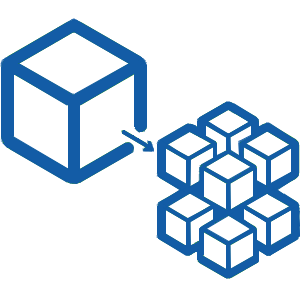2013-2014: The Emergence and Foundational Concepts
The earliest titles in our dataset mark the initial formal discussions and definitions of microservices. In 2013, the concept appeared as "Adaptive Architectures & Organisations," signaling an early understanding that this approach would impact not just code, but also how teams and businesses structure themselves. By 2014, the focus quickly shifted to practical adoption. Titles like "Microservice Prerequisites" and "Testing Strategies in a Microservice Architecture" illustrate the community's immediate need to understand the foundational requirements and operational considerations for this new architectural style. The connection to cloud environments was also established early on, as seen in "Migrating to Cloud Native with Microservices," indicating microservices were intrinsically linked to the burgeoning cloud computing paradigm.
2015-2016: Practicalities, Trade-offs, and Broad Adoption
This period saw a significant expansion in the discourse around microservices, moving from definition to widespread practical application and the inevitable challenges. The term "Microservice Trade-Offs" in 2015 explicitly acknowledges that the benefits came with costs, a more mature perspective than pure evangelism. A major theme was the journey from traditional "Monolith to Microservices," with titles like "From Homogeneous Monolith to Heterogeneous Microservices Architecture" and "Journey from Monolith to Microservices & DevOps" appearing frequently.
Operational concerns became more prominent, including "Deploying & Scaling Microservices" and "Monitoring Microservices." Security also emerged as a key area, with titles such as "Secure Socks: Exploring Microservice Security" and "Practical Microservice Security." The organizational impact, first hinted at in 2013, became clearer with "Microservices & the Inverse Conway Maneuvre" and "Why Cross-Functional Teams Build Better Microservices," reinforcing the idea that team structure and architecture are intertwined. Furthermore, specific language and platform implementations, such as "Building Microservice Architectures in Go" and "Java-Based Microservices, Containers, Kubernetes - How To," indicate that the ecosystem was rapidly maturing and specializing.
2017-2018: Maturing Ecosystem and Operational Resilience
As microservices moved beyond early adoption, the conversation deepened into advanced operational challenges and the surrounding ecosystem. Resilience became a central theme, highlighted by "Resilience Engineering in a Microservice Landscape" and discussions around "Consistent Disaster Recovery." This period also marked the clear ascendancy of new infrastructure technologies. "The Future is Istio" and "Making Microservices Micro with Istio and Kubernetes" demonstrate the growing importance of service meshes and container orchestration platforms in managing complex microservice deployments.
Security remained a consistent concern, with titles like "Securing APIs & Microservices with OAuth & OpenID Connect." The focus on data interaction evolved, with "Event-Driven Microservices" becoming a specific area of interest. Critically, the community started cataloging anti-patterns and pitfalls, as evidenced by "The Seven (More) Deadly Sins of Microservices" and "On the Definition of Microservice Bad Smells," indicating a collective learning process and a move towards best practices. The continued prevalence of "A Pragmatic Guide for Migrating to Microservices" and "Using Microservices for Legacy Software Modernization" showed that monolith migration remained a significant driver.
2019-2020: Advanced Patterns and Emerging Criticality
This era saw discussions pivot towards more sophisticated architectural patterns, refined operational strategies, and, notably, a more critical evaluation of microservices themselves. Advanced design patterns were a focus, with topics like "Microservice Patterns" and detailed explorations of "Event-Driven Microservices, the Sense, the Non-sense and a Way Forward." Service meshes continued their prominence, with "Battle of the Circuit Breakers: Resilience4J vs Istio" showcasing a comparative approach to specific technologies within the mesh ecosystem.
Data management remained a persistent challenge, leading to titles like "The Database Unbundled: Commit Logs in an Age of Microservices" and "Pat Helland on Data Management with Microservices." A significant shift from earlier years was the explicit questioning of microservices' universal applicability. Titles like "When To Use Microservices (And When Not To!)" and "Why GraphQL Between Microservices Is the Worst & Best Idea" reflect a more nuanced, experience-driven perspective. This critical self-assessment was accompanied by an increased focus on tooling for analysis and debugging, such as "Explore your Microservices Architecture with Graph Theory & Network Science" and "Helping Developers Analyze and Debug Industrial Microservice Systems."
2021-2022: Re-evaluation and Managing Complexity
The discourse in this period took a marked turn towards introspection and addressing the inherent complexities introduced by microservices. A striking development was the direct questioning of the paradigm itself, exemplified by "The Problem with Microservices" and "The Monolith Strikes Back: Why Istio Migrated From Microservices to a Monolithic Architecture." This signals a move away from unbridled enthusiasm to a more pragmatic and balanced view, leading to the concept of "Strategic Monoliths & Microservices."
Managing the operational fallout of distributed systems became a key concern, reflected in titles like "Cloud Chaos & Microservices Mayhem" and "Managing Architectural Technical Debt in Microservices." The focus also shifted to advanced management and self-adaptation, as seen in "Developing Self-Adaptive Microservice Systems" and "Automatic performance diagnosis and recovery in cloud microservices." Concurrently, microservices began to penetrate more specialized application domains, with titles like "Developing a Microservices Integration Layer for Next-Generation Rail Operations Centers" and their application in "IoT Microservices," indicating their broader utility beyond traditional web applications.
2023-2025: Optimization, Future Directions, and Sustained Success
In the most recent period, the conversation around microservices has matured significantly, focusing on achieving tangible success, optimizing their use, and exploring advanced, often AI-driven, applications. The ongoing debate about their suitability is captured by titles like "When To Use Microservices (And When Not!)" and repeated discussions titled "Microservices, Where Did It All Go Wrong?" This indicates a continued wrestling with the complexities and occasional pitfalls of the architecture, even as it becomes more entrenched.
Despite these ongoing challenges, there's a strong push towards enabling success, as evidenced by "Enabling Microservice Success" and "Resilient Microservice Applications, by Design, and without the Chaos." The titles also point to cutting-edge advancements, such as "Machine Learning Driven Optimization in Cloud Native Systems" and the ambitious goal of "Towards self-driving microservices." Furthermore, microservices are being applied to increasingly specialized and critical areas, including "Placement of Microservices-based IoT Applications in Fog Computing" and "Industrial artificial-intelligence applications" (looking ahead to 2025). The recognition of "The Magic of Small Things - 10 Years of Microservices" in 2024 underscores the architectural style's enduring impact and evolution over a decade. Organizational challenges, however, remain a critical barrier to adoption, highlighted by the observation that "Organizational challenges can be more difficult than technical ones."


















